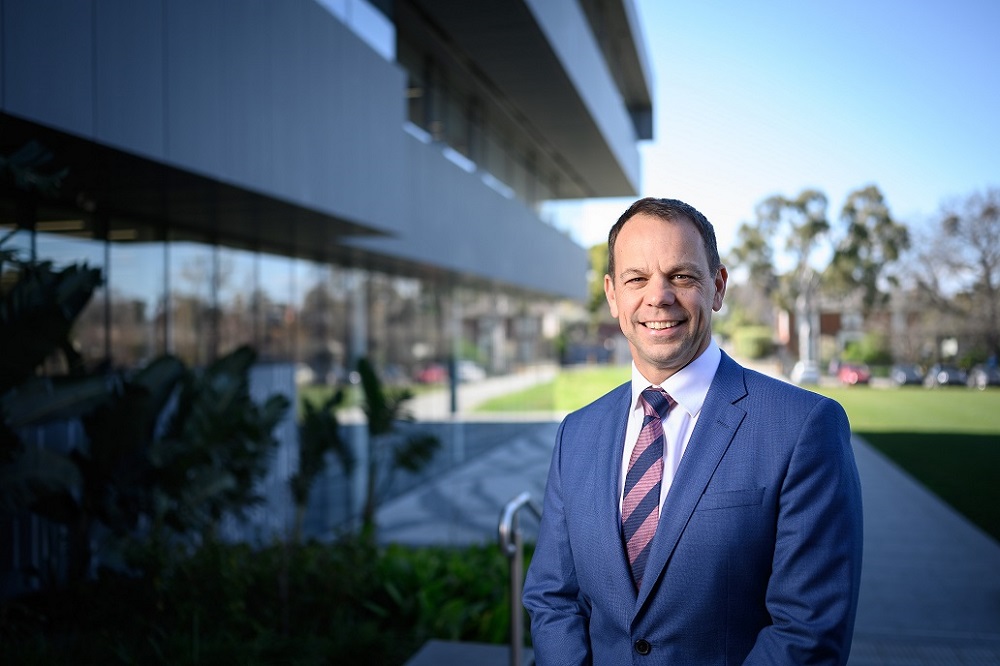
In March, Carey Baptist Grammar School became the first school in Melbourne to be impacted by COVID-19 when one of its teachers tested positive to the virus that went on to infect 373 students and 139 staff members in schools across the state.
As the impact of the virus on Australia’s education system was becoming clear, the school responded by quickly charting its own path through the early stages of the pandemic.
The school developed an online learning model that allowed teachers to more easily connect with individual students and personalise their learning to a greater degree than ever before.
As remote and flexible learning became the norm, the school also implemented an improved learning model which supported every student to progress at their own pace, uncover their strengths and nurture their passions.
Below, The Educator speaks to the school’s principal, Jonathan Walter, about his leadership approach during COVID-19, the technology that helped support teaching and learning during this difficult time and the new relationship that has been formed with the school’s parent community.
TE: The outbreak of COVID-19 clearly forced educators everywhere to adapt quickly to profound change. What leadership approach did you take to ensure that your staff navigated these changes as successfully as possible?
JW: The approach we took was one of complete transparency. Because we were the first school in the state to shut down, the government hadn’t established a plan for how to approach it, so we were working alongside them, taking one step at a time. It was important to be open and vulnerable enough to declare that we didn't have all the answers yet. I also got the strong sense that this was such challenging news that I couldn't just write a letter to staff, families and students – it felt too clinical and detached. It was so important to me to connect on a human level, so in the absence of being able to get everyone together, I very quickly took to video. This was a new communication method for us, but I was able to deliver the news in a more personal way.
TE: Were there any particularly effective technologies that helped the school meet the learning needs of students and teachers throughout the pandemic?
JW: Staff and students very quickly adopted Microsoft Teams as a space for collaboration, and Canvas, the learning management system we introduced last year. These allowed us to maintain connection and continue to deliver the curriculum. But these technologies showed us that we had underestimated the students’ desire to be self-organised, self-motivated and independent. We have been able to offer greater scope for students to have more direction and ownership over their learning than what we've previously done. It meant that some students were able to progress more quickly while others could be provided the structure they need. It has opened up a lot of fresh thinking for us around how we might deliver programs into the future, which gives us the chance to personalise, meet the individual needs of every student and have them progress at their own rate appropriate to their skills and development.
TE: You said a new relationship between parents and schools has been developed this year. Can you tell us more about this and the opportunities for stronger school-parent ties moving forward?
JW: For the first time, parents, particularly in the younger years, have essentially been in the classroom with their children. They’ve seen first-hand the enormous effort our teachers have made to connect and to support the learning of their children. We have received a lot of feedback and I think parents have developed an appreciation for the great work that our staff do. They really valued the teachers’ patience, their ability to explain concepts and their efforts in working with the different types of support each student needs. I think, moving forward, this relationship allows us opportunities to draw on the expertise of our parents in their professions, to really extend Carey’s offering beyond the traditional boundaries of the School. The ability to tap into what is a hugely creative and expert group of parents and for our students learn from their real-world experiences will deepen the program and make it richer for everyone.
TE: As the end of the school year approaches, what are the most important things you have learned as a principal from this challenging and eventful year?
JW: It has really highlighted that connection and relationships are the most important things in schools. The real joy of teaching comes from the connections made with students and families, and the most memorable aspects of school for the students are the connections they make with their teachers and peers. Having strong relationships hugely enhances student wellbeing, and we know that there is an interrelationship between wellbeing and quality learning. We have made wellbeing a focal point throughout this period, because we know that if you have established wellbeing, strong connections and healthy relationships, the learning will flourish. I think this is leading to the emergence of a new hybrid model of schooling, which is a combination of the best of the remote learning that was so successful, but also the best of learning together and how we use that time onsite to maximise the connections, enhance the sense of belonging and deepen the relationships.
*In June, Carey Baptist Grammar School was named a finalist for the Innovation in Curriculum Design Award ahead of the Australian Education Awards 2020.


